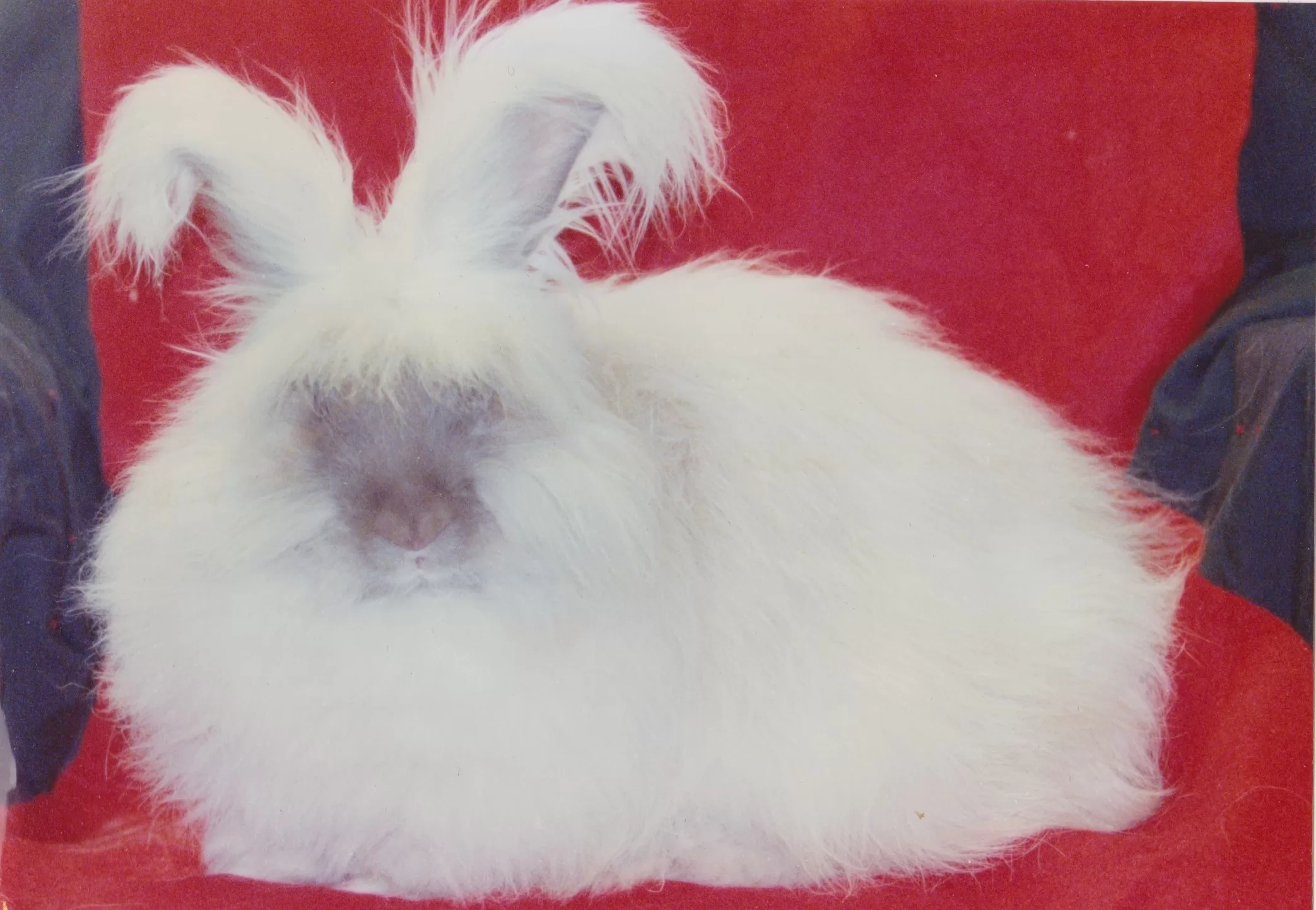American Rabbit Breeder’s Association, or more commonly, ARBA. If you say ARBA out loud enough you realize it sounds like a sect. Little did I know it was an even more dangerous organization.
I handed my rabbit to the judge. Unlike showing cattle, this is the entire role of the rabbit exhibitor. Rabbits are in their prime when they are under six months of age. I had an English Angora five months old with long, dense wool. I was thirteen. My grandparents had driven to me to the show in Rochester, NY. Most other breeders with Angoras were old Asian women, fussing away over their rabbits and chattering vibrantly. The one exception was a pale-faced girl with freckles who I later learned was named Megan. She was cute in a nerdy way. Megan’s mother ran her lips over her teeth as she assessed both me and my rabbit.
The judge handed me back my rabbit. He said it was disqualified because of a broken toe joint.
Before making the disappointing drive back I remained around the building long enough to see that judge also had rabbits in the show, whom my rabbit would have eventually been competing against. That’s when I learned the truth: cattle people may cheat on the age of their heifers, but rabbit people are truly brutal.
Another dairy farming family had an English Angora they wanted to get rid of, and my mother, thinking it looked exotic, wanted me to take it. I told her I didn’t want the hassle of grooming it. The next day she brought it home. Not knowing what to do, I named her after a Louis L’Amour character. At the county fair Galloway won Reserve Best of Show, second only to the family that invited the judge. The husband of that family put his arm around me after the contest and with a deep voice, not unlike that of God’s, said “Son, you have a good rabbit there. You must show her.”
In Rochester, as I loaded the cage into my grandparent’s vehicle I passed Megan’s mother. She was large-boned, with wiry grey hair pulled back. She leaned against the outside of the building and smoked a cigarette.
“Your rabbit’s no good,” she said, blowing smoke in my direction. “ She’s just for breeding now.” She didn’t try to hide her smile.
I was young, but I didn’t buy the broken toe joint story. I convinced my grandparents to take me to another show, and there was no mention of it there. Although she didn’t look as good as she did before, Galloway beat Megan’s colored angora and gave a good run against the white angoras of the old Asian ladies. Galloway’s weakness was her narrow shoulders, so I found a buck with strong conformation and tried to breed her. After fourteen attempts, which included using the industry tricks of locking her in a hot car to heighten her hormones and me, conflictingly, holding her for the buck, she finally conceived a kit…which she promptly ate. The next litter, however, would include five living offspring, and my rabbitry would eventually grow to thirteen English Angoras.
Unlike other rabbits, whose care requirements are simply pellets and water, English Angoras need to be carefully combed and the stray wool blow-dried out of their coat every day. Otherwise, terrible mats would form, which they invariably did anyway. My teenage years would be spent grooming rabbits for hours every evening, talking to them and scolding them for being so dirty. I would tell them the day’s gossip, and other times scream at them out of frustration when they wouldn’t be still…and then eventually ask to be forgiven. From a distance, my parents watched as I morphed into a little old Asian woman.
Megan’s mother would scowl when she saw me carrying my rabbits into a show, because although I couldn’t beat the long-standing showers for Best of Breed, I was placing ahead of her rabbits consistently. Eventually she decided that if she couldn’t beat me, she would join me…or rather have our rabbits join. The deal was made: her buck, my doe. She would get pick of the litter.
We brought the rabbits around the corner of the building, out-of-sight, as if doing something morally ambiguous. The three of us stood over the cage. As an awkward teenager I felt a little uncomfortable having such events occur at my feet while a girl stood next to me. I glanced over to see Megan’s cheeks reddening too.
The mating didn’t catch and when I explained that to Megan’s mother at the next show she took her time looking me over, trying to decide if I had become just as ruthless as the others. Or in other words, a true rabbit person.
Galloway eventually died, one title short of achieving grand champion status (calculated differently in rabbits). With the linchpin gone, I allowed the rabbitry to dwindle before eventually going to college and forfeiting showing altogether. Looking back, I give credit to my grandparents for not only supporting this strange interest, but doing so knowing the implications it would have on my character and future social life. Spending long hours combing rabbit wool has made me a hard man. Gone is the innocent and naïve boy that thought rabbits were merely cute pets. Since then I’ve chosen to look at the world as one big rabbit show—not always pleasant and fair, but if you want to bring a rabbit to the table you better do whatever it takes to win.
*
This article is part of The Milk House column series, published in print across three countries and two languages. It can also be found at themilkhouse.org.
This article appeared in a similar form in Progressive Dairyman and Farm and Livestock Directory.

